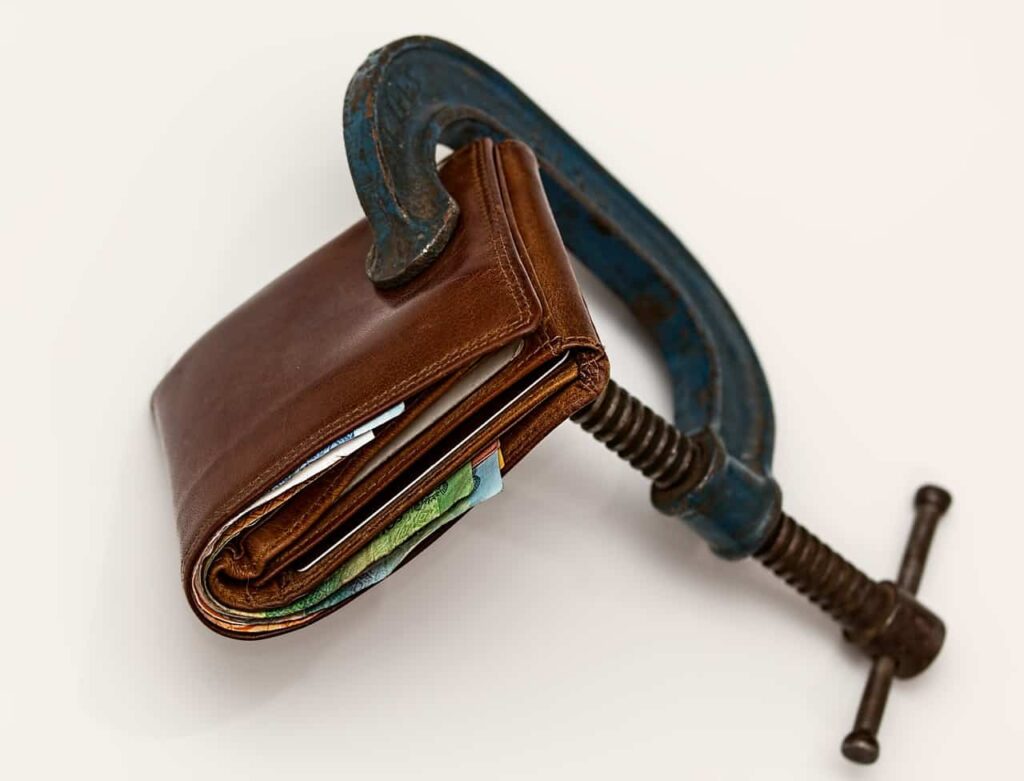Simple Tips For Boosting Your Tax Refund This Year
If you’re like most people, you’re undoubtedly anticipating your tax refund this year. In this blog post, we’ll go through a few simple ideas for increasing your refund this year.
The Three Tax Deduction Rules
Every year, we claim approximately $22 billion in work-related expenses. It’s a large amount, and the ATO will be scrutinizing the specific claims filed. When it comes to claiming job deductions, however, there are three golden principles. If you follow them, you should be fine.
First, you must have spent the money yourself and were not repaid, thus you cannot claim the taxi cost that your supervisor reimbursed you for.
Two, it must be directly tied to making your income – so you won’t be able to claim your new sunglasses unless you are an outside worker and wear them on the job.
Finally, retain your receipts since you’ll need them to prove it.
The Errors in Car Expenses
The most common error people make when claiming work-related car expenditures is believing they are automatically entitled to 5000 kilometres as a standard deduction under the cents per kilometre approach and claiming for personal travel.
It’s critical to understand the key rules in order to prevent getting taken for a ride. In general, you can claim if you attend work-related meetings away from your usual workplace or travel directly between two independent places of employment (home does not qualify).
The only time you may be able to claim journeys to and from home is if you bring heavy tools or equipment to work; for example, if you’re a cleaner and your employer requires you to use an extension ladder or vacuum cleaner and there is no secure space to store them at work.
You can compute your claims using a logbook or the cents per kilometre technique. To claim, you must own the vehicle. If your car is owned by your employer or is part of your wage package, you cannot make a claim.
If you’re not clear about what costs you can and cannot claim, the ATO provides a terrific work-related expense quiz that you should take. See how many of these you got right!
The $20,000 Instant Tax Deduction has been extended
The Treasurer announced another 12-month extension of the $20,000 instant asset write-off in this year’s Federal Budget, which was welcomed by small business owners.
Small firms can claim an instant tax deduction for all assets purchased for business use up to $20,000 in value.
This could range from workplace computer equipment or a coffee maker to solar panels for the office roof or a ute if you’re a tradie.
While there is no need to rush because you have until June 30, 2019, it may be worthwhile to consult with your accountant about which fiscal year would be best to purchase an asset and claim your immediate tax credit.
Working at Home
If you work from home on a regular basis, you may be able to deduct part of your expenses. There are two sorts of expenses that you may be eligible to deduct a portion of:
“operating costs” such as heating, cooling, lighting, and furniture depreciation;
In rare cases, “occupancy expenses” such as mortgage interest, insurance, land taxes, and rates.
You can use a rate of 45 cents per hour to determine your claim for running costs. Alternatively, you can deduct the work-related percentage of your real operating expenses.
You can only claim occupancy expenditures if space in your home is dedicated only to a place of business, such as a doctor’s or dentist’s surgery or a hairdresser’s studio. More information is available at ato.gov.au.
Making a Claim for Internet and Phone Bills
If your employer compels you to use these services, you can claim the percentage of your bill that is genuinely work-related. As with all work-related expenses, you can only claim the portion of your bill that is actually work-related.
If you use your phone for work just sometimes and are not claiming a total deduction of more than $50, you can claim:
- Each work calls made from your landline costs 25 cents.
- Each work calls made from your cell phone costs 75 cents.
- Each text message sent from your phone costs 10 cents.
If you are claiming more than $50 in phone and internet expenditures, you must determine what proportion of your usage is for work and apply that rate to your account to calculate your claim. Keep a record of how you calculated your claim, since the ATO may request it.
Income Security Insurance
If you have income protection insurance, don’t forget that you can claim the cost of any premiums paid.
However, any reimbursement you received under the policy for income loss must be reported on your tax return.
Some policies, such as life insurance and trauma insurance, have no deductible premiums.
If you pay for next year’s income protection insurance before June 30, you can claim a tax benefit in the current fiscal year. But first, consult with your tax advisor about the advantages of deferring any expenses.

Two Reasons Why Purchasing Hospital Insurance May Be Beneficial
If you earn more than $90,000 (singles) or $180,000 (families and couples), you will be subject to a Medicare Levy Surcharge if you do not have hospital coverage (extras-only policies do not count). The surcharge is determined at a rate of 1% to 1.50% of your gross income.
This is in addition to the 2.5% Medicare Levy. Depending on your income, the surcharge may cover the cost of a policy, so consider whether this tax would be better spent on insurance. Just make sure you get the insurance that covers exactly what you desire.
If you’re over 31 and don’t get coverage before June 30, you’ll have to pay a 2% lifetime loading on your premiums since you don’t have private health insurance every year. The loading only applies to hospital coverage.
Because of the loading, if you’re 40 and take up insurance for the first time now, you’ll pay a whopping 20% on top of your rates.
The loading is eliminated after ten years of coverage.
Depositing Your Tax Returns
You can file your tax return in one of three ways. The speed with which you receive your refund is determined by the option you select.
Most information from your employer, bank, and government agencies will be pre-filled by last August if you lodge online through the myTax system (accessible through myGov). If you utilized the ATO’s deductions app to track all of your costs, you’ll be able to enter your data here to prefill your tax return. You should receive your refund within two weeks.
If you want to file a paper return, you can do so by visiting ato.gov.au and downloading or ordering this form. The majority of refunds are provided within 50 business days of receipt.
Finally, you have the option of using a registered tax agent. The expense is reimbursable.
Managing Tax Receipts
You may not believe that keeping track of your receipts is difficult. However, a large percentage (about 50%) of them are lost each year!
So, when you incur expenses at work or make purchases linked to your job, make sure you file them correctly so they can find their way back home with ease.
The best part about these tax filing tips? Even if something goes wrong, they’re simple to fix; just follow this advice: – Keep copies by keeping anything, even documentation, properly organized inside folders outdoors.
Keep an eye on it
You may believe you can get away with not keeping records, but the ATO is always on the lookout for people who are not in compliance.
If it’s not in your notebook or logbook, inquiries about where these visits were taken and how much distance was covered during each one will be asked, which could result in fines being issued!
So keep track of everything, including work commutes and private vehicle miles driven, even though they are optional according to this page.
Employ a Professional
You may be aware that over 70% of Australians hire a tax agent to prepare their tax return.
Using one means you have a professional accountant analyzing and checking the accuracy of your taxes, as well as looking for any deductions that could result in a larger refund on filing day!
Using a tax professional can help you avoid problems with the ATO and obtain extensions that they do not provide directly. You’ll also be able to collect their costs the following year, which is fantastic!
Understand Your Rights as an Investor
Investors can deduct a number of expenses connected to portfolio management. For example, in addition to the cost of investment journals and subscriptions, you may be able to deduct the cost of internet access and the depreciation of a computer used to track your assets.
Gather any receipts for expenses such as monthly internet charges to figure out what you can claim. Then, to estimate the appropriate fraction of costs you can claim, consider how much time you spend monitoring your investments as opposed to general use.
Develop Your Superpowers
There are many working Australians who are eligible for a tax discount on personal super contributions; you do not have to be self-employed.
This financial year, the concessional (before-tax) contribution ceiling is $25,000, which includes your employer’s 9.5 percent Superannuation Guarantee payments as well as any salary sacrifice contributions you make.
If your employer contributed $15,000 to your super this year, you may be able to claim a tax benefit for up to $10,000 in personal contributions. Even a $1,000 contribution can increase your tax refund by $325 for a middle-income earner.
Make sure to fill out a notice of intent form, which informs your super fund that you intend to claim contributions on tax. Before you can file your tax return, you must get a written response.
Prepare to Claim Work From Home Expenses
Many of us were compelled to work from home during lockdowns when the epidemic struck last year. It saw the Tax Office develop a straightforward method for claiming work-from-home expenses, with a tax deduction of 80 cents for every hour worked from home. This deduction is applicable even if you do not have a distinct work area, such as a home office or study.
The same deduction is available for the current fiscal year, but you must keep records to verify your claim.
Utilize the coming weeks to compile timesheets, rosters, a work diary, or comparable documents (such as a spreadsheet) that show the hours worked at home. Then, multiply the total number of hours by 80 cents to get your deduction. For example, if you worked from home for 16 hours each week for 30 weeks in 2020/21, you should be eligible to claim $384.
Safeguard Your Earnings
If you are unable to work due to illness or injury, income protection insurance might be a financial lifeline. Even better, the premiums are usually tax-deductible.
Your super fund may provide income protection. However, it’s worth double-checking because it’s not always included in a fund’s default coverage. Income insurance can be an optional extra with additional premiums that members must choose.

Check with your fund to see if your income is protected. If it isn’t, consider purchasing coverage outside of super. This manner, you can provide proper security while simultaneously increasing your tax deductions.
Make a Receipt System.
You’re not alone if you stuff your receipts into a hidden drawer or a large envelope. Having said that, there is a better method. Receipts are extremely simple to misplace, therefore you must devise a strategy. Also, the ink can fade with time, leaving you with a blank sheet of paper!
One of the most effective strategies to save money during tax season is to keep track of and save receipts. You’d be shocked how many things you may claim that you weren’t even aware of.
Moving ahead, you should strive to save every relevant receipt and consult with your accountant to see exactly what you can claim. If you prefer a more modern approach to preserving receipts, there are now apps that can help you digitize them.
Sweep Your Portfolio With A Broom
June is an excellent month to conduct a portfolio health check. Investors may have a few dud investments, such as a share or two that has consistently underperformed, but they stick onto them in the expectation of a return. Getting rid of chain draggers in your portfolio frees up funds to invest in higher-quality assets.
If you sell investments at a loss, remember that capital losses can only be offset against capital gains, not normal income. So, if you’ve realized large gains on other investments sold throughout the fiscal year, a Marie Kondo-style tidy-up of your portfolio may be a timely plan.
‘Realized’ is the essential word here. Capital gains are only taxable when an investment is sold.
Are these steps worth the effort? Absolutely! A single additional deduction might significantly increase your tax refund. Always consult with a tax professional to see what you are eligible to claim.


















